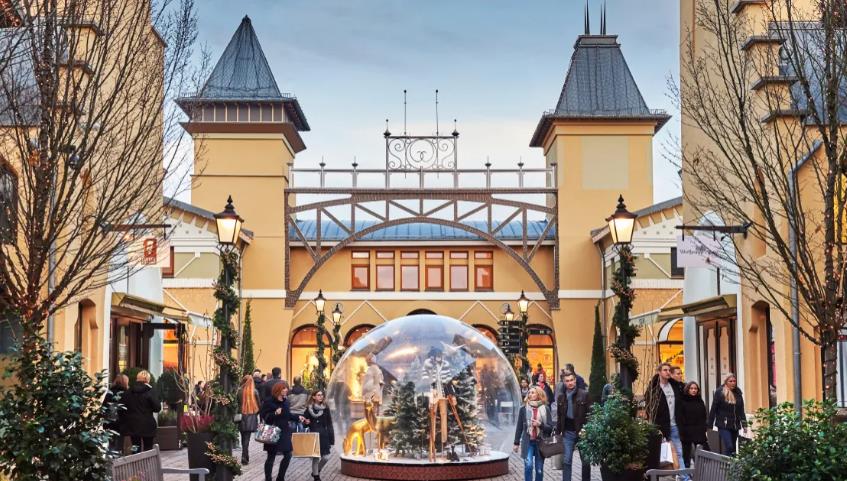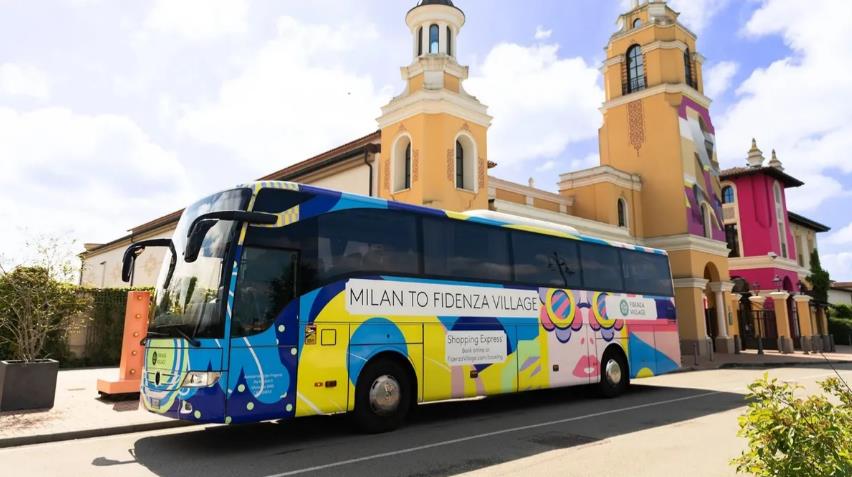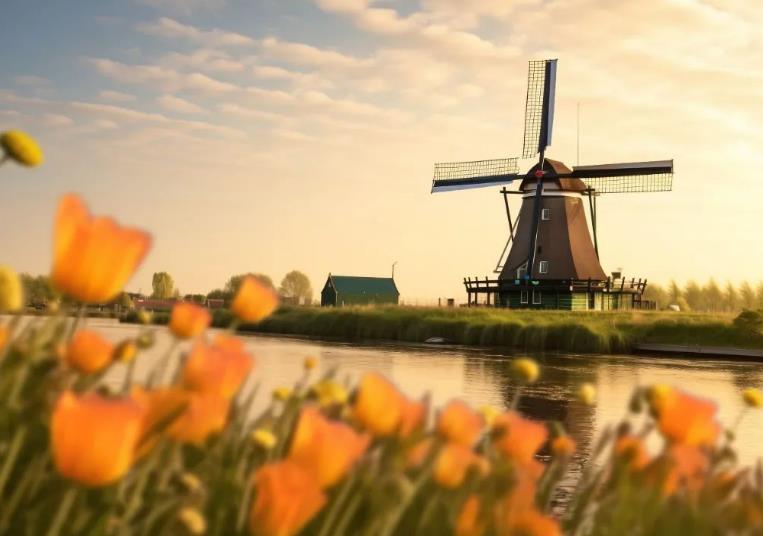https://bh.trip.com/moments/poi-baekje-cultural-land-61442022
App
Customer Support
Find Bookings
3.3
4.8/5
리뷰 5개
Baekje Cultural Park is located in Buyeo County, South Korea. It is the largest theme park in South Korea. It was built to commemorate the famous Baekje culture and is a good place for tourists to learn about Baekje culture. The main attractions of the Baekje Cultural Park are: Saba Palace, Mausoleum Temple, Tomb Park and Baekje History and Culture Center.
Baekje Cultural Land 주소:
455 Baekjemun-ro, Gyuam-myeon, Buyeo-gun, Chungcheongnam-do
Baekje Cultural Land 추천 관광 시간:
0.5-1 day
Baekje Cultural Land 전화번호:
+82 41-408-7290
Recreating the Baekje Royal Palace Exactly as It Was!
Located in Buyeo, the Baekje Cultural Complex faithfully recreates the royal palace of the ancient Baekje kingdom, offering a magnificent and awe-inspiring view. Behind the palace, various folk buildings from that era are constructed, providing a vivid insight into the lives of the Baekje people. Visit Buyeo to explore the splendid Baekje Royal Palace.
🔹️Baekje Cultural Complex
🚩455 Baekjemun-ro, Gyuam-myeon, Buyeo-gun, Chungcheongnam-do
wh diary
3
Blue Night, Walking through Baekje’s Old Castle - Buyeo Baekje Cultural Complex
On a cool summer night, we recommend a leisurely stroll through Buyeo's night walking course.
🌳 Address: 455 Baekjemun-ro, Gyuam-myeon, Buyeo-gun, Chungcheongnam-do
(5-10 minutes walk from Lotte Buyeo Resort and Buyeo Lotte Outlet)
🌻 Admission: (Night) Adults 4,000 won, Youths 3,000 won, Children 2,000 won
Walk along the stars that have come down to the ground at the Baekje Cultural Complex, which is modeled after the palace of Baekje!
If you walk along the huge Sabi Palace and the 5-story wooden pagoda,
you will meet the moon, stars, and moon rabbits that have come to play in the sky. (Photo zone)
⚘ Tip
- Since the site is very large, you can take a tram or electric train to see the entire area.
There are also experiential activities for children. - Find the treasure chest of Baekje King, eliminate the night goblins
#Buyeo #Buyeo travel #Historical travel #Walking #Night walking course recommendation
봄그늘
3
I visited
I visited Baekje Cultural Land with my friends in April this year as part of 'Orientation with Koreal Culture' initiative by my college. The weather was good and trip went smoothly. The place is historical site managed by Korean government as part of preserving their cultural identities. The site is a combination of two seprate but closely linked facilities: a museum and cultural site. At both the locations sufficient arrangements have been made to explain the historical significance of the place to foreign visitors in English. Also at the cultural site which is reasonably wide a deputed guide accompanies younin in case you visit as a group. Overall a day well spent.
zavir
5
Jeongnimsa Temple Site and Baekje Cultural Complex, great places to enjoy a trip to Buyeo
🌏 Hye-sun Travel Moment #Chungnam #Buyeo
📍 Address: 56 Dongnam-ri, Buyeo-eup, Buyeo-gun, Chungnam
📍 Business hours: March~October 9:00~18:00 / November~February 9:00~17:00 (Closed on Chuseok, Lunar New Year, and January 1)
📍 Admission: Adults 1,500 won / Teenagers 900 won / Children 500 won
I enjoyed my winter trip to Buyeo while looking around the Buyeo Jeongnimsa Temple Site and Baekje Cultural Complex. It had historical significance and it was nice to be able to look around while studying☺️ The sturdiness and patterns were so wonderful that I was amazed^^ Now there are many modern technologies and equipment, but in the past, they were all assembled by people going up and fitting them together. It was a place where I realized once again that there were many construction craftsmen.
#PleaseWinter #BuyeoTravel #GyeongnamTravel #SoloTravel
#PlacesToVisitInBuyeo
혜윰
15
'Baekje Cultural Complex' that recreates the splendid Baekje culture
This is the Baekje Cultural Complex, which recreates the appearance of Sabi Castle during the Baekje period.
At that time, when the capital was moved from Ungjin (Gongju) to Sabi (Buyeo),
the appearance of Sabi Castle, which bloomed brilliantly, was recreated as it was.
Since these are recreated buildings, you cannot feel the traces of time,
but you can fully feel its splendor and grandeur.
Take a time travel to the Baekje period in Buyeo!!
📍Baekje Cultural Complex, 455 Baekjemun-ro, Gyuam-myeon, Buyeo-gun, Chungcheongnam-do
⏰Weekdays 9:00-18:00 (until 17:00 in winter)
💰Adults 6,000 won
#Buyeo travel#Youth travel#Travel addiction#Places to visit in Buyeo#Buyeo travel destination#Baekje Cultural Complex#Solo travel#Buyeo travel destination#Buyeo travel destination
#Safe travel#Outing
염씨표류기
5

Recommended Themes

2025 Recommended Attractions in Baekje Cultural Land (Updated July)
22 posts

2025 Recommended Guides in Baekje Cultural Land (Updated July)
16 posts

2025 Recommended Thorough Guides in Baekje Cultural Land (Updated July)
6 posts
Time Travel (Kinda) in Buyeo
#summervacay Spent the day exploring Baekje history in Buyeo-gun and it was actually pretty cool, like a chill little time travel moment. Didn’t expect to be into ancient kingdoms, but walking around these old sites had a kind of calm magic to it.
Hit up the Baekje Cultural Land first, giant traditional buildings, super detailed, kind of felt like being on a drama set. Then wandered over to the old fortress area (Busosanseong), which has these peaceful trails with amazing views and just enough ruins to make you feel like you're discovering something.
Also climbed up to the shrine spot where they honored the Baekje kings, not too intense of a hike, and totally worth it. Plus, there’s this whole legend-y vibe in the air, like you’re walking through stories.
Buyeo isn’t loud or flashy, but if you’re into peaceful spots with old soul energy, it hits different. Definitely one of those “slow travel” wins.
Neng9i
Buyeo Baekje Cultural Complex and Damyang Trip
🌳 Let's embark on a 2-day, 1-night trip to Buyeo and Damyang.
We'll explore the Baekje Cultural Complex in Buyeo, stay overnight, and then visit Damyang's Bamboo Forest and Metasequoia Road.
1️⃣ Day 1
🚙 Depart for Buyeo
🔮 Arrive at Buyeo Baekje Cultural Complex
🌳 Enjoy lunch and tour the cultural complex
🌲 There’s also an outlet near the complex for shopping
🌺 After dinner, we recommend staying overnight at the nearby Lotte Resort
2️⃣ Day 2
🚗 Depart for Damyang
🌳 Arrive at the Bamboo Forest and explore
🦋 For lunch, try Damyang's famous bamboo rice and grilled short rib patties
🌲 Take a stroll along the Metasequoia Road
🌺 Visit cafes and souvenir shops near the Metasequoia Road
🚗 Head back home
🌹 Here's a 2-day, 1-night itinerary for Buyeo and Damyang. Have a wonderful trip!
에메랄드 바다
📅 Travel
📅 Travel Itinerary
Day 1: Gudre Pier Gungnamji
Day 2: Lotte Outlet Baekje Cultural Complex
🏨 Accommodation Recommendation Lotte Resort Buyeo
🍴 Restaurant Recommendation Lotte Outlet Korea City
📌 Useful Tips I regret not taking the amphibious bus that departs from Baekje Cultural Complex and goes all the way to the river at once, but it looks like a better way to tour~
wonder3710
Experience Buyeo Baekje Cultural Complex
In Chungcheongnam-do, Buyeo, there is the Buyeo Baekje Cultural Complex. While the buildings are not ancient, they are newly constructed structures, and nearby you can find facilities like Lotte Resort and a roulette game area.
The complex recreates the culture of ancient Baekje, featuring buildings and museums. In the courtyard, there were events where traditional games were reenacted, and prizes were given out. Many children were actively participating.
The site is vast, with Baekje-era architectural structures built across the area, making it quite a walk to explore everything.
After visiting the Buyeo Baekje Cultural Complex, I headed to Juknokwon in Damyang, Jeollanam-do. I truly got my fill of bamboo there. Walking through the bamboo forest and listening to the rustling of bamboo leaves was a delightful experience.
A short distance from Juknokwon, there is the Metasequoia Road. Although there is an entrance fee, walking along the Metasequoia Road is worth it. Nearby, there are souvenir shops, cafes, and charming accommodations, offering plenty to see and enjoy.
Experience Baekje culture, stroll through the bamboo forest, and take a walk along the Metasequoia Road!
에메랄드 바다
Proposal in a hot air balloon 🩵
#OutdoorDate
I got proposed to while riding a hot air balloon in Buyeo!
They say you can only ride at sunset (dawn) when the daily temperature difference is large!
We had such a good time that we're going to ride again with our parents next time!! #DomesticTravel #HotAirBalloon #Buyeo #Proposal #Tiffany
_TI***39
Baekje Cultural Complex
#AustraliaFlightEvent
Buyeo Baekje Cultural Complex
455 Baekjemun-ro, Gyuam-myeon, Buyeo-gun, Chungcheongnam-do
0507-1369-7290
You can see history and culture at once, such as Sabigung, Neungsa 5-story wooden pagoda, Gobun Park, Living Culture Village, and Wiryeseong Fortress, and you can see them while listening to the guide's commentary if you take the train at your own expense. If you make a reservation on Naver, you can get an additional 10% discount
(And if you wear Hanbok, you can get a 50% discount on the admission fee)
Parking lot
3 hours free if you buy an admission ticket
When you enter Baekje Cultural Complex, there are electric fishing boats and electric rickshaw rental shops
1 hour 20,000 won
30 minutes 15,000 won
You can also ride these to look around the inside.
*No refunds after rental
고슴도치 루비
🏰 Time travel from Buyeo and Iksan, Baekje Historic Sites! ⏳✨
#Domestic travel
A place where you can experience the ancient culture of Baekje firsthand, the Baekje Historic Sites in Buyeo and Iksan! 📜 This is an important historic site where you can see the splendid history and culture of Baekje at a glance, and it was a special place where you could experience the lives and art of the people at that time up close.
From Gungnamji and Jeongnimsaji in Buyeo to Mireuksaji in Iksan, I was able to learn deeply about the ancient civilization of Baekje by visiting various historic sites. In particular, Mireuksaji is a representative Buddhist historic site in Baekje, and I couldn't help but be amazed by its magnificent appearance. 🏯 The historical value and Baekje spirit that can be felt here were truly special and profound.
In addition, the historic sites were filled with exhibits and relics, so I could learn how the Baekje people lived and what technologies and arts they developed. It was a time to think about the wisdom and lifestyle of the people of that time while looking at the ancient buildings and tombs. 🌳
The natural scenery around these historic sites is also really beautiful! It was a really satisfying trip because I could take a walk in a quiet atmosphere and heal by following historical sites. 🌸 It's a perfect place to leave memories because there are many great photo spots! 📸
Experience a special trip where you can feel the breath of Baekje in Buyeo and Iksan and reminisce about its splendid culture and history. I highly recommend visiting this place where you can meet history and nature at the same time! 😊
#BaekjeHistoricalSite #BuyeoTravel #IksanTravel #BaekjeCulture #HistoricalExploration #HistoricalSiteTravel #BaekjeHistory #CulturalHeritage
몬의 여행일기
1
Baekje Buyeo Cultural Complex
Buyeo Cultural Complex, which I visited while traveling to Buyeo, Chungcheongnam-do. Buyeo Cultural Complex is a place that recreates Baekje Sabi Palace, and it is a place that properly shows the excellence of Baekje history. Although it is a recreated building, it feels like you have stepped into the past when you actually enter, and there are many things to see in the cultural complex, so I recommend taking your time looking around.
#March Travel Support Fund Event
떠나주아
This is the Baekje Cultural Complex in Buyeo-gun, Chungcheongnam-do, South Korea.
This is the Baekje Cultural Complex in Buyeo-gun, Chungcheongnam-do, Republic of Korea.
The Baekje Cultural Complex was planned to recreate the splendid history and culture of Baekje, which served as a hub for cultural exchange in ancient East Asia. It is a large-scale national project that has been carried out for a total of 17 years from 1993 to 2010, with a budget of 807.7 billion won on a 3,299,000 m2 site in Hapjeong-ri, Buyeo-gun, Chungcheongnam-do.
Sabigung
Sabi Palace, the first royal palace recreated during the Three Kingdoms period of Korea, is a 13-building, 4,825 m2 structure with Cheoncheongjeon, the center of the palace, surrounded by a fire wall. Donggung and Seoul are arranged above Cheonjeongjeon, and this structure is a unique ancient structure that cannot be found in later palaces.
Neungsa
Neungsa is a temple that has been restored from the Neungsan-ri Temple Site in Buyeo (Baekje Royal Temple). Baekje Geumdongdaehangho (National Treasure No. 287) and a Sariracham (National Treasure No. 288) with the name of Baekje Changyang engraved on it were issued. This revealed that this temple was built in 567 AD by enshrining sarira in a wooden pagoda. The five-story wooden pagoda, the first of its kind in Korea, is 38m tall.
Neungsa Daeungjeon is also called Geumdang and houses the Three Buddhas inside. Daeungjeon is two stories on the outside and one story inside. This is to make the building look grand and splendid from the outside and to create a grand yet solemn sense of space inside, as the Buddha is enshrined inside the building. This shows the importance of this building.
This is a place where the central palace of Baekje Sabi period is recreated. The main hall, Cheonjeongjeon, is named after Cheonjeongdae, which is said to have reported the country's major political issues to heaven. The main hall of the palace here was the most important building in the palace where various state ceremonies such as the king's coronation ceremony and New Year's ceremonies were held and foreign envoys were welcomed.
This is a reproduction of the palace where King Onjo used to see Jeongwoo when he helped Hanam Wiryeseong. According to the Samguk Sagi, the newly built palace was simple but not shabby, and splendid but not extravagant. It consists of Antaejeon, the central government office, Jwapyeongcheong in the east, and Jwachangjeong in the west.
There are records that Baekje's marriage customs were roughly similar to those of Goguryeo. It is presumed that there were similar marriage systems such as the Seok-okje (Seo-okje), where a man stayed at his wife's house and then branched off when he grew up, and the Seok-okje (Seo-okje), where a man took his sister-in-law as his wife when his older brother died.
#Domestic travel #February travel support event
모두의좋은삶
Baekje Cultural Heritage Festival🎊 Buyeo Baekje Cultural Festival
#FallTravel #PlacesToVisitInBuyeo #DaeBaekJeFestival #FallFestival
🎈Period: 2024.09.28. (Sat) ~ 2024.10.06. (Sun)
🎈Location: Buyeo-gun area (Baekje Cultural Complex)
I went to the opening ceremony on the day the Baekje Cultural Festival was held in Buyeo! The opening ceremony was held at the Baekje Cultural Complex!
It was great to be able to enjoy various things to see and media art together. Since the cultural festivals of Baekje were restored in the past, I was able to learn about history and enjoy many things to see:) Be sure to visit the festival held every year✨
파하하송송
Enjoy the Baekje Cultural Festival at Buyeo Baekje Cultural Complex🎉
#Fall travel #Baekje Cultural Festival #Buyeo places to visit #Buyeo Baekje Cultural Complex #Baekje Historic Sites
🎈Location: Baekje Cultural Complex (455 Baekjemun-ro, Gyuam-myeon, Buyeo-gun, Chungcheongnam-do)
🎈Closed every Monday / Business hours 09:00-18:00
🎈Baekje Cultural Festival: 2024.09.28-10.06
🎈Admission fee: 6,000 won for adults
I visited Buyeo Baekje Cultural Complex during the Baekje Cultural Festival!
Admission was free during the festival.
It was so amazing and great that they built a new building to represent Baekje culture. It's also a great place to see the night view!
Buyeo Lotte Outlet is located right next to it, so I highly recommend it for shopping and taking a walk :) It's a place I want to visit again after the festival period ends by renting a hanbok.
파하하송송
Where can I become a Baekje person??
#SeptemberTravelSupportEvent
📍Chungnam Buyeo-gun Gyuam-myeon Baekjemun-ro 455 Baekje Cultural Complex
📞0507-1369-7290
It was great that the instructor was there!!
I felt like a Baekje person for a day
There was a nice golden pagoda,
and it was great to see the Baekje tomb style!!
#Baekje #Buyeo #history #familytrip
여행이 일상이 되고싶은 사람
Hidden Gem Next to Buyeo Baekje Cultural Complex Outlet
📍Buyeo Baekje Cultural Complex
Located right next to the Buyeo Outlet, this is the Baekje Cultural Complex :)
🏡 This historical theme park was developed over approximately 17 years to promote the excellence of Baekje's historical culture. It recreates the Sabigung Palace from the Three Kingdoms period, making it a great place to learn about history!
🏡 The complex is large and offers a glimpse into the Three Kingdoms era, from castles to bustling streets and residential areas. It's a great tourist spot to visit alone or with children ◡̈
🏡 There are also restaurants within the cultural complex where you can enjoy pajeon and makgeolli in a traditional Korean house. Plus, with the outlet next door, it's perfect for shopping and then exploring the complex ㅎㅎ
📍455 Baekjemun-ro, Gyuam-myeon, Buyeo-gun, Chungcheongnam-do, Baekje Cultural Complex
✅ Adults: 6,000 KRW, Teenagers: 4,500 KRW, Children: 3,000 KRW
✅ Parking available
✅ Night opening and hanbok rental available
쩨로
1
Baekje Cultural Complex Night Opening, a great place to visit right now⭐️
#Overseas flight event
The Daebaekje Festival was held yesterday for the first time in 13 years at the Buyeo Baekje Cultural Complex, which is just as pretty as Gyeongju Cheomseongdae, Donggung Palace, and Wolji Pond.✨
📍Chungnam Buyeo-gun Gyuam-myeon Baekjemun-ro 455 Baekje Cultural Complex
✔️0507-1369-7290
✔️Night opening hours
24.04.12 ~ 11.10
Fri, Sat, Sun 18:00 ~ 22:00
✔️Admission fee
Adults 5,000 won
Teenagers (13 to 18 years old) 4,000 won
Children (7 to 12 years old) 3,000 won
*Same price for preschool children (4 to 6 years old) during night opening
#Buyeo travel #Baekje Cultural Complex #Buyeo travel
교니픽
📌 Domestic travel Chungnam Buyeo “Baekje Cultural Complex”
#SpringTravel #FamilyTravel #CulturalExperience
How to get there: Baekjemun-ro 455, Gyuam-myeon, Buyeo-gun, Chungcheongnam-do Baekje Cultural Complex
Tip: Recommended to take the Sabiro train
Nearby restaurant: Jangwon Makguksu
Baekje Cultural Complex visited on a sunny day to match the spring weather
The sun was hot during the day, so I took the Sabiro train and listened to explanations about cultural heritage
and went halfway into Baekjae Cultural Complex.
I got off and looked around the old traces here and there, and it was quite large, so it might be hot in midsummer ^^;;;;
There was a carp feeding experience in the middle, so if you were traveling with children, it would be good to stop by for a while.
First of all, the surrounding scenery is so nice that if you like greenery and old sentiments, it's a must-visit!
There's also Lotte Resort in front of Baekje Cultural Complex, so it might be good to make a reservation at a nearby accommodation!
삐삐앵
2
BIGGEST historical theme park in Korea!
#korea #culturalattractions #historicculture #themepark
Baekje Cultural Land is a Korean historical theme park in Buyeo, South Korea, where you can learn about the history and culture of Baekje Kingdom. Baekjae doesn’t have anything left, so this is the only preservation of its history and culture. It is the biggest historical theme park in Korea.
This theme park is quite big. It will take you about 3 hours to explore everything at a moderate pace. There are lots to see, including traditional houses and buildings, trees and plants and cultural events, like taekwondo performances. The scenery is very nice, which is why many Korean dramas are filmed here. So be sure to take some photos! The admission ticket is quite cheap, less than 5 USD. It closes on Mondays and is usually open until 5pm.
Underwater Nomad
5
Into Baekje Culture
Baekje Cultural Complex, visited in winter, is a perfect place to enjoy with family as it reproduces various Baekje folk and bio-faculty facilities. Children can learn about Baekje history and culture while experiencing various experiences^^ It is large in scale, so I recommend taking the train that circles the inside. #WinterTravel #BaekjeTravel #BuyeoTravel
wh diary
1
Masone, a famous restaurant in Baekje Cultural Complex near Buyeo Lotte Resort
If you visit without much expectation, it's a good Baekje Cultural Complex restaurant, a tourist attraction, and a restaurant called Masone
600g of mixed beef. There are three cuts: sirloin, ribs, and skirt steak. Masone says that the meat is American beef, and it's prime and choice grade.
I used the self-service bar to get as much side dishes as I wanted.
The restaurant is really big, so I think it would be good for group gatherings.
#RestaurantIntroduction
소라히
1
Buyeo's Return to Sabiseong 'Baekje Cultural Complex'
A place that was built with Sabiseong in mind, located a little away from the center of Buyeo! I would like to introduce you to the Baekje Cultural Complex!
It was the first place I wanted to visit when planning a day trip to Buyeo, as it was also used as a filming location for dramas!
In the center of the cultural complex, there were many spaces where you could learn about how the royal castle was built and various experiential activities!
In addition, since the complex was so large, you could comfortably tour the Baekje Cultural Complex from the entrance by taking a small train and listening to the commentary of a guide!
The appearance of the earthen fortress of Wiryeseong, located deep inside, was also implemented, so if you are interested, I recommend that you visit!
*Baekje Cultural Complex
- Address: Baekjemun-ro 455, Gyuam-myeon, Buyeo-gun, Jungnam
- Operating Hours: 09:00~18:00
- Admission Fee: Adults 6,000 won / Youths 4,500 won / Children 3,000 won
#Hot Place#Safe Travel#Recreational Travel
지구별모아이
Post
더 많은 추천 보기
Recommended Attractions at Popular Destinations
Popular Attractions in Bangkok | Popular Attractions in Manila | Popular Attractions in Tokyo | Popular Attractions in Taipei | Popular Attractions in Hong Kong | Popular Attractions in Seoul | Popular Attractions in Kuala Lumpur | Popular Attractions in Los Angeles | Popular Attractions in Shanghai | Popular Attractions in New York | Popular Attractions in Shenzhen | Popular Attractions in Osaka | Popular Attractions in Singapore | Popular Attractions in London | Popular Attractions in Guangzhou | Popular Attractions in San Francisco | Popular Attractions in Beijing | Popular Attractions in Macau | Popular Attractions in Bali | Popular Attractions in Jakarta | Popular Attractions in Paris | Popular Attractions in Ho Chi Minh City | Popular Attractions in Istanbul | Popular Attractions in Phuket | Popular Attractions in Chicago | Popular Attractions in Seattle | Popular Attractions in Toronto | Popular Attractions in Orlando | Popular Attractions in Cebu | Popular Attractions in Chiang Mai
Popular Ranked Lists
Top 50 Must-Visit Restaurants in Bali | Top 10 Trending Attractions in Yangshuo | Top 50 Must-Visit Restaurants in Vancouver | Popular Premium Hotels Near Douglas County | Popular Premium Hotels in Tamarin | Popular Luxury Hotels Near Miri | Popular Luxury Hotels Near Balbieriskio seniunija | Popular Premium Hotels Near Kamyzyaksky District | Top 50 Must-Visit Restaurants in Singapore | Top 50 Must-Visit Restaurants in Madrid | Top 20 Luxury Hotels near Rutherford | Popular Best Things to Do in Jishou | Popular Best Things to Do in Zhijiang | Popular Premium Hotels Near Samosdelka | Popular Best Things to Do in Sheyang | Top 50 Best Things to Do in Frankfurt | Top 50 Must-Visit Restaurants in Osaka | Top 50 Must-Visit Restaurants in Frankfurt | Popular Premium Hotels in Turkistan | Top 50 Luxury Hotels near Costa Occidental | Popular Best Things to Do in Heze | Top 20 Best Things to Do in Dehong | Top 50 Must-Visit Restaurants in Taipei | Popular Best Things to Do in Tongdao | Popular Best Things to Do in Luanping | Top 50 Must-Visit Restaurants in Kuala Lumpur | Top 50 Must-Visit Restaurants in Phuket | Popular Luxury Hotels Near Port Macquarie | Top 50 Must-Visit Restaurants in Kyoto | Top 10 Trending Attractions in Anji
About
Payment Methods
Our Partners
Copyright © 2025 Trip.com Travel Singapore Pte. Ltd. All rights reserved
Site Operator: Trip.com Travel Singapore Pte. Ltd.
Site Operator: Trip.com Travel Singapore Pte. Ltd.